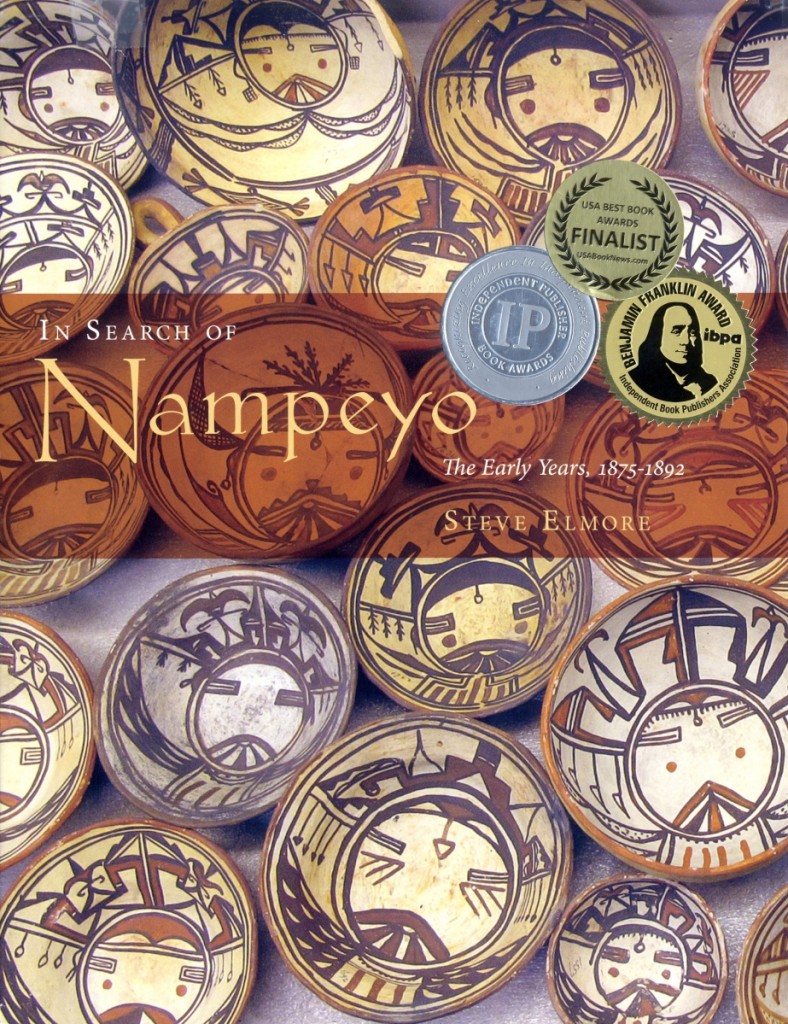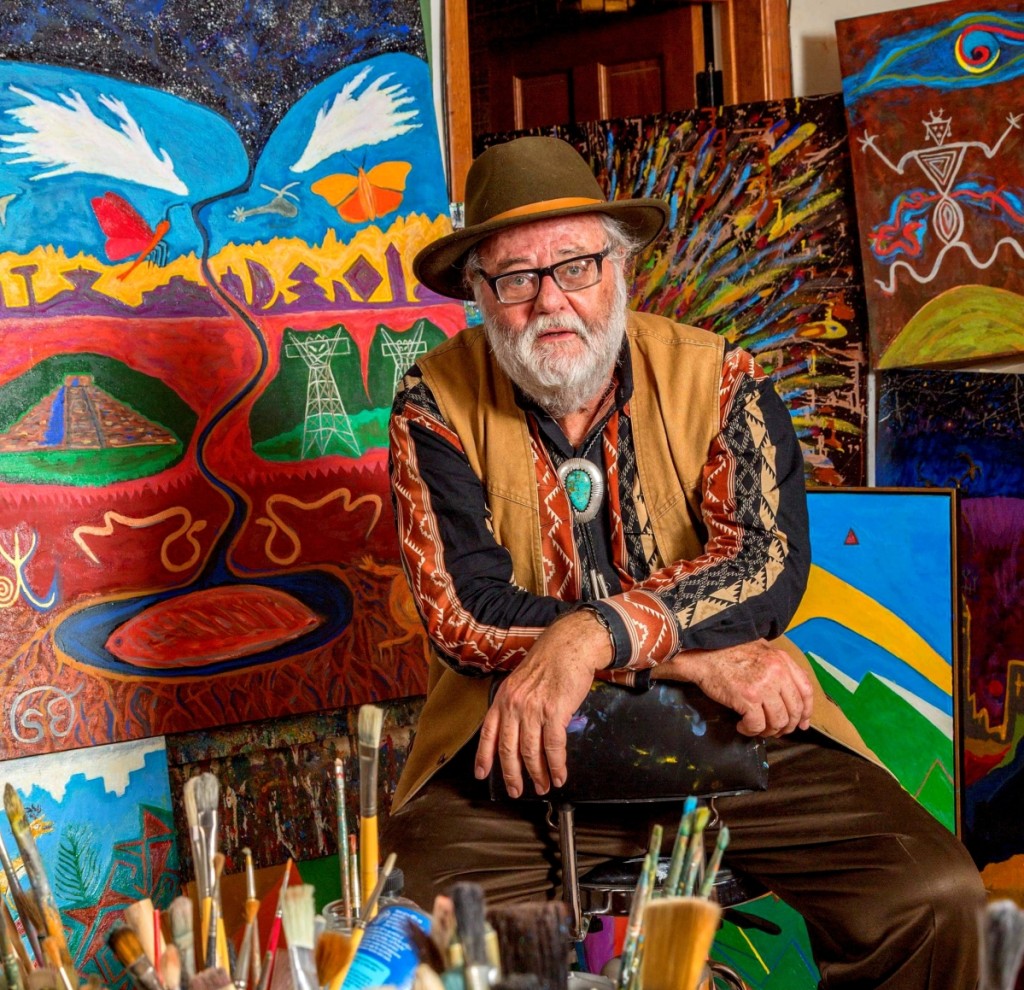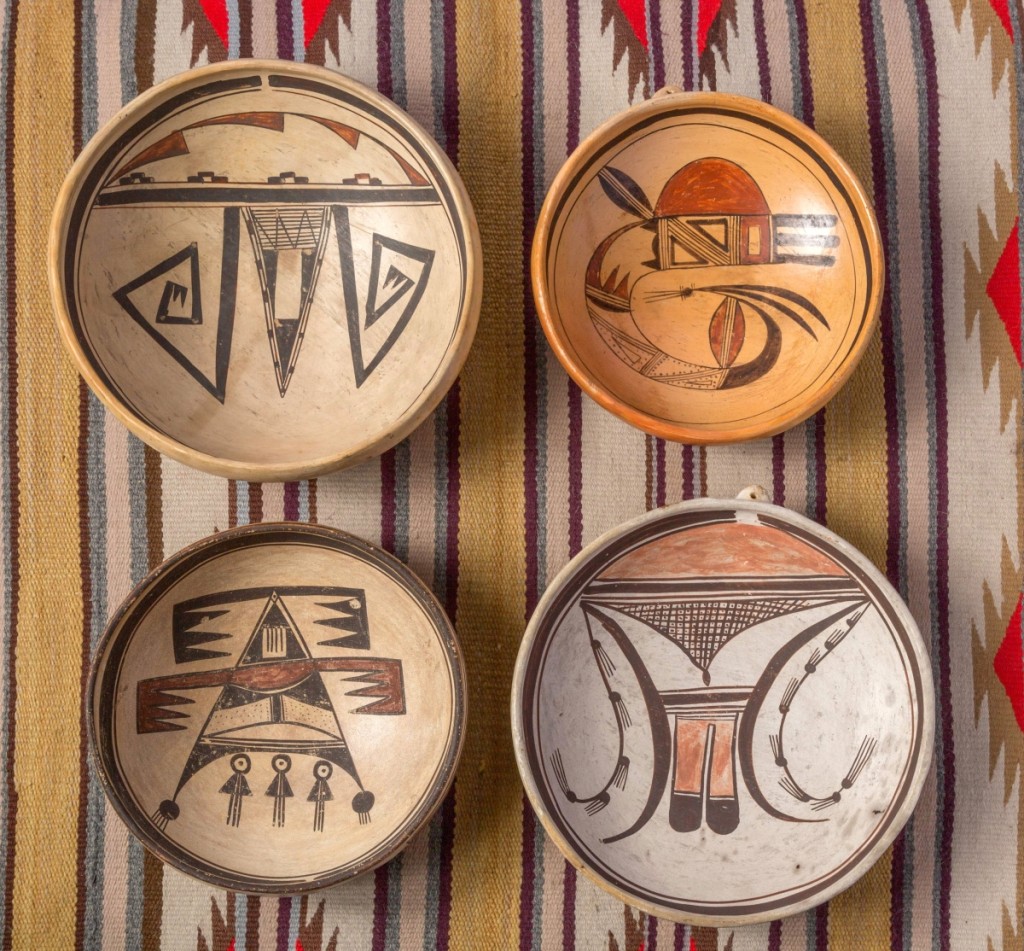A post-holiday visit to Santa Fe, N.M., found us in the Paseo de Peralta gallery of Steve Elmore, a dealer, scholar and painter whose symbol-laden landscapes are influenced by his longtime study of Hopi art and spirituality. Researching the great Hopi potter Nampeyo (circa 1856-1942) with the assistance of Nampeyo’s granddaughter, potter Rachel Sahmie (b 1956), Elmore discovered what he is convinced is Nampeyo’s earliest work at Harvard University’s Peabody Museum. Formed by British trader Thomas Keam (1846-1904) in the last three decades of the Nineteenth Century, the Peabody trove is the centerpiece of Elmore’s book In Search of Nampeyo: The Early Years, 1875-1892. Elmore continues to champion Nampeyo, whose elegantly attenuated designs in clay defined the Sikyatki Revival style and were a harbinger of Modernism.
To what do you attribute your love of Hopi pottery and, specifically, the work of Nampeyo?
I was attracted to the grace of her ceramic forms and her outstanding abstractions, which were surreal and unique, but meaningful. Her abstractions symbolized flight, the flight of birds and the flight of the human imagination. The designs on Hopi pottery represent a high point in aesthetic expression.
You write that Nampeyo was the first named Native North American potter. Is she also, in your view, the most significant?
Definitely. Nampeyo single-handedly rescued Pueblo pottery by making it into an art form rather than an ethnographic oddity. Her immense productivity and diverse creativity filled an important gap in the American art market around 1900, when America was establishing its own identity separate from Europe.
What prompted you to write a book?
No one had taken on the proper attribution of Nampeyo and her work in a systematic way. Her work remained mysterious and outside the accepted canon of art. I felt an obligation to publish my discovery of Nampeyo’s early work in the Keam collection at the Peabody Museum at Harvard. This discovery provides a significant building block for understanding her later achievement.

In his book, Elmore attributes to Nampeyo Nineteenth Century Hopi pottery in the Keam Collection at Harvard’s Peabody Museum of Archaeology and Ethnology.
You have a delightful conversational writing style. Was it your intention to bring readers along on your pot-hunting adventure?
Absolutely, I wrote the book for the many collectors who have admired Nampeyo’s work. I felt they deserved to know more about her career and artistic process, so I wrote for the layman and not the academy.
Based on your reading, who were the greatest Indian traders of the early years? Do you see yourself in much the same role?
Thomas Keam at Hopi and Lorenzo Hubbell at Ganado are the early pioneer traders for the Hopi in Arizona. My role is much less exotic and adventuresome, but I do get to hang out at Hopi, which is a real pleasure.
How did you become friendly with Rachel Sahmie? Are you still close to Rachel and other Nampeyo descendants?
I began buying contemporary Hopi pottery from Rachel’s mother, Priscilla Namingha Nampeyo (1924-2008), who introduced me to Rachel in the early 1990s, after she had returned to Hopi from active military service in Germany. Rachel is a dear friend, as are several other Hopi potters, including Vernida Polacca Nampeyo (b 1955), a granddaughter of Fannie Polacca Nampeyo (1900-1987).
Do you feel Nampeyo’s reputation is secure?
Yes and no. Nampeyo is not well enough understood as an accomplished Modern artist. There has not been a major museum exhibition dedicated to her work. During her lifetime, her abstractions were seen as primary examples of Modernism.
Best collection of Hopi pottery accessible to the public?
The recent permanent show of Hopi pottery at Western Spirit: Scottdale’s Museum of the West in Arizona is quite strong. Nampeyo’s work is found in more than 25 major museums in the United States, and a few pieces are often on exhibit. However, her work is rarely presented within the mainstream of American art.
What projects do you have underway or would you like to undertake?
I am currently working on a second volume of Nampeyo’s life, covering her major mature years from 1892 to 1942. I would like to produce a documentary, but that is a much more difficult undertaking.
How long have you been painting? How have Hopi symbols and beliefs influenced your work?
I have been painting for more than 20 years. I’m trying to fuse Hopi imagery with my own biography as a Western artist. Nampeyo’s work serves as a catalyst both for inspiration and creativity, but I’m also attempting to integrate elements of the Sikyatki Revival into the mainstream. Nampeyo has been my primary mentor and inspiration.
Can we look forward to a special show at Steve Elmore Indian Art in August, before and during Santa Fe Indian Market?
I’m sure I’ll have a new crop of oil paintings and a few newly discovered Nampeyo ceramics to show.
-Laura Beach



